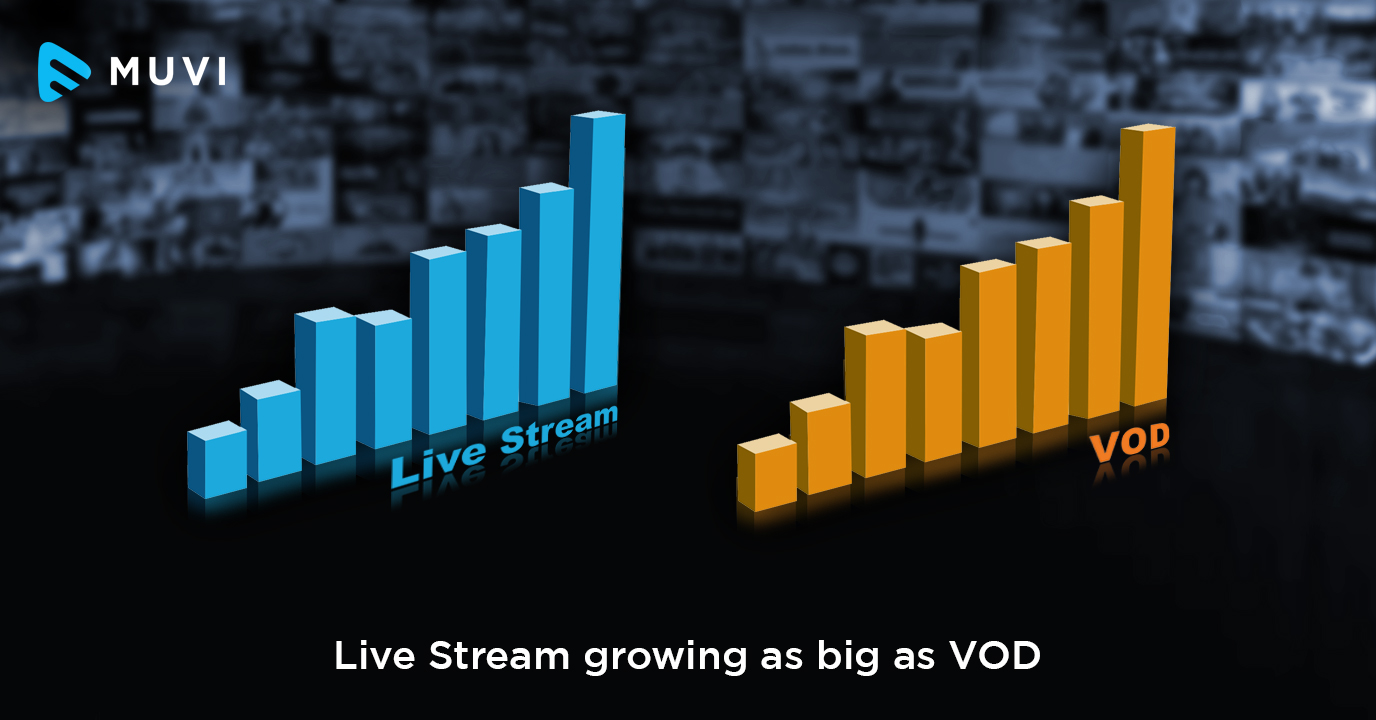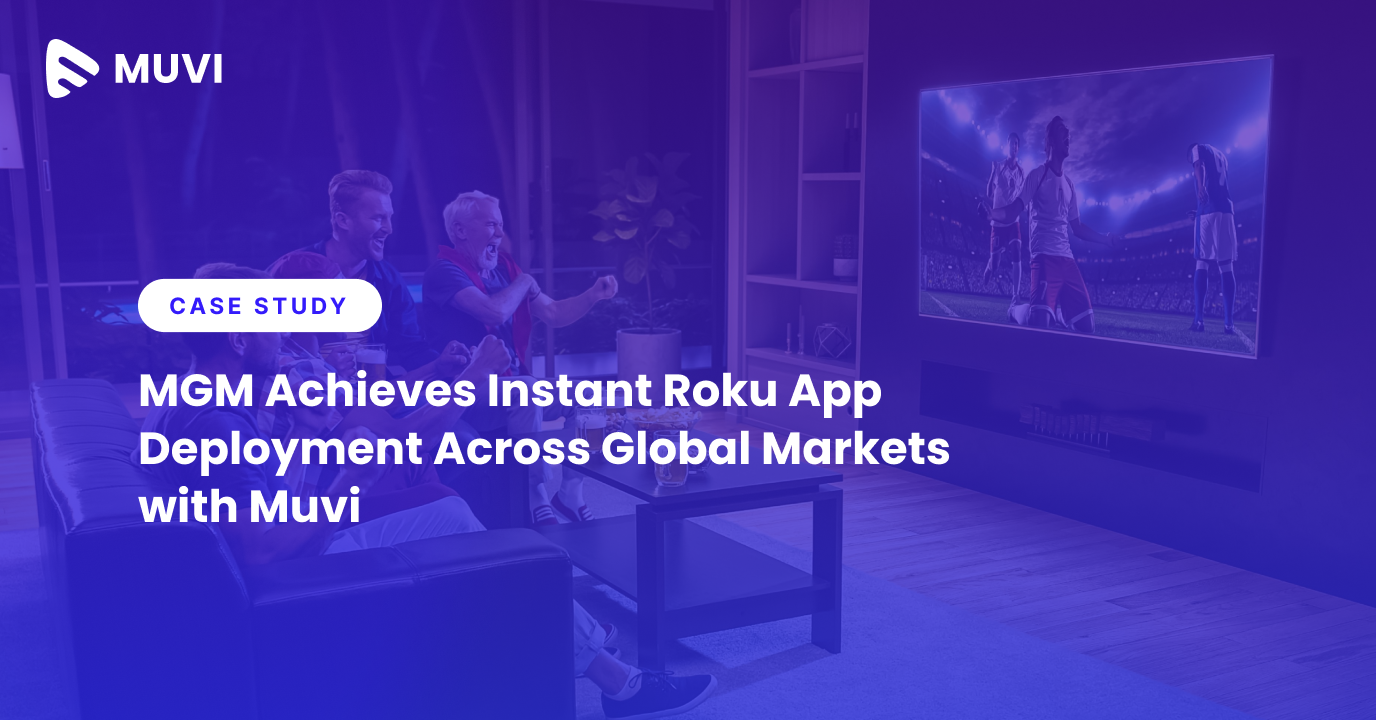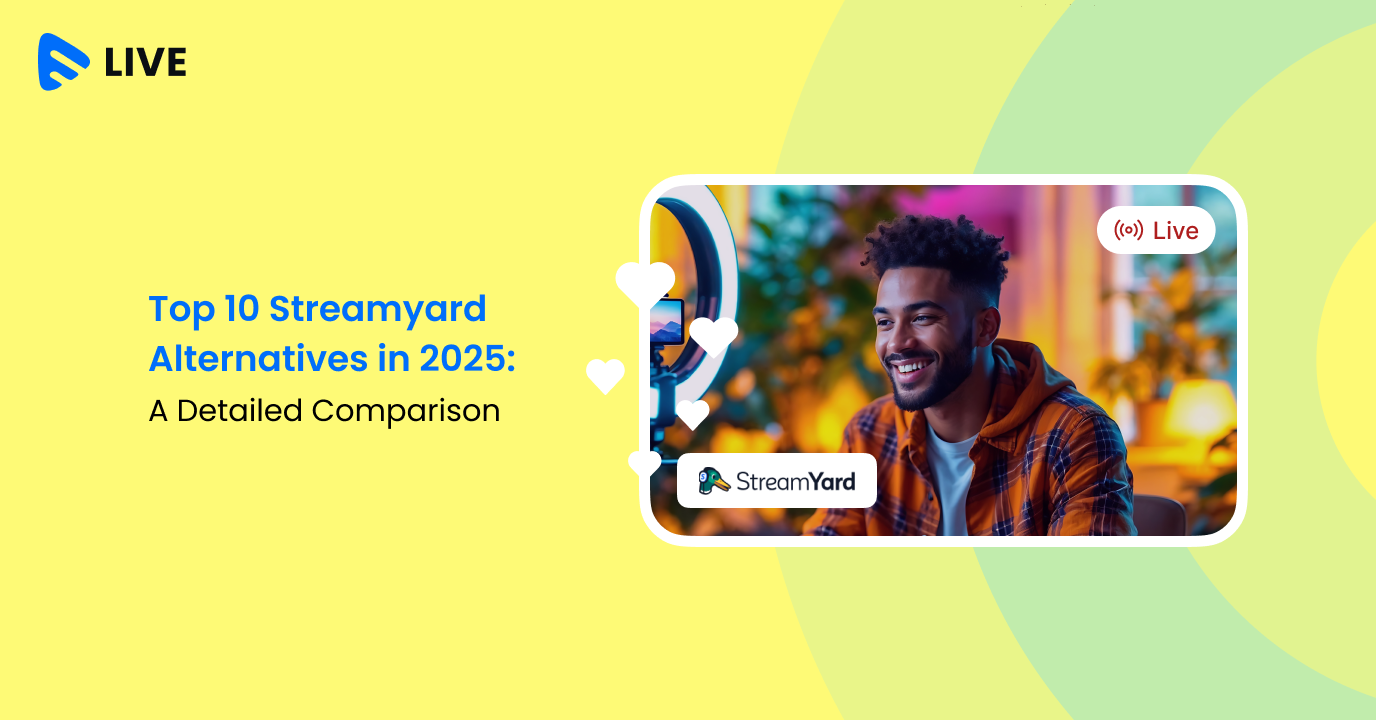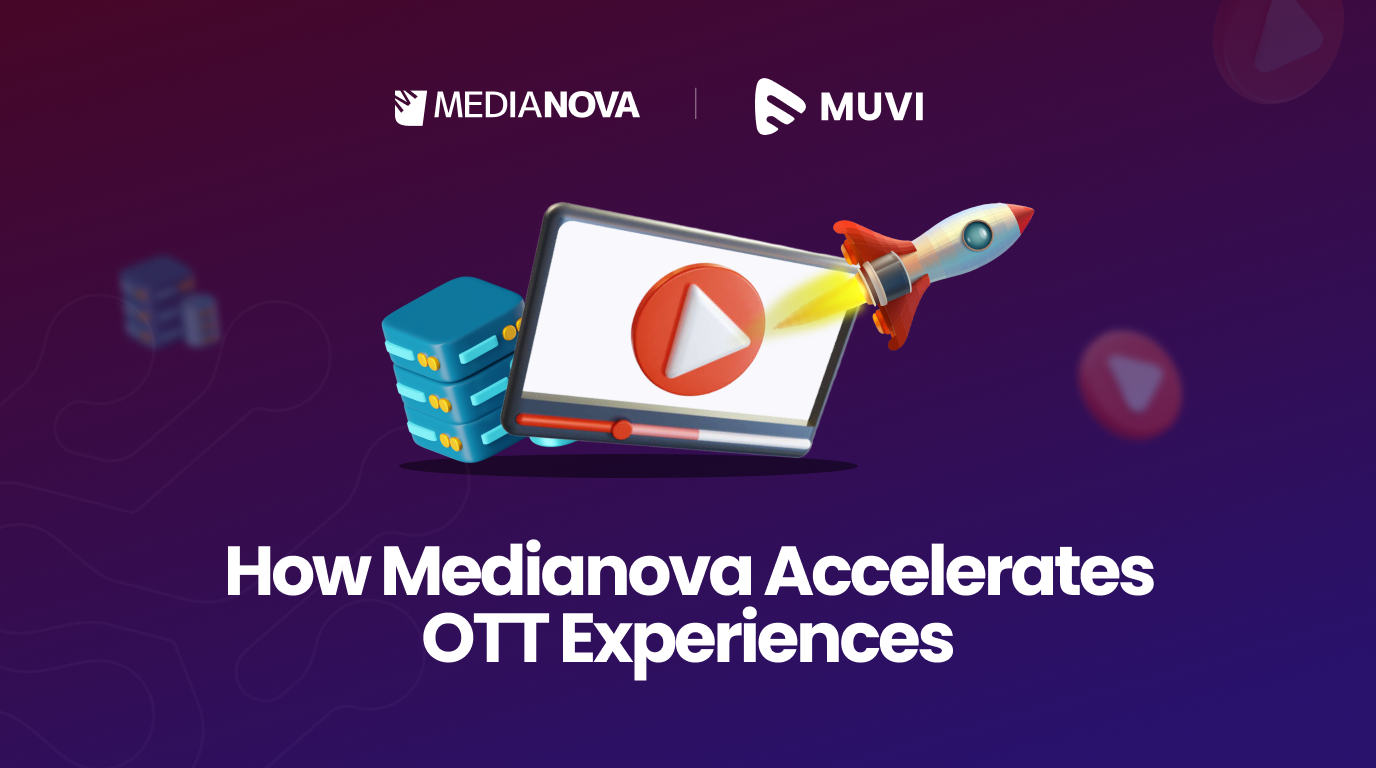Written by: Soumya Sekhar
“Live streaming” as a format has been a growing favorite over the last few years. Consumers are preferring live content to on-demand content of late. Everyone wants to see what’s happening live. The revolution began with user-generated live content and with Snapchat stories being the pioneer. Earlier over-the-top (OTT) live content was limited to sports and news genre only, and in some parts, it might have been adopted for religious programmes and preaching sessions too.
But Facebook, Snapchat, and Instagram took live streaming to the next level. Viewers are now able to enjoy the real-time experience by streaming live content as opposed to the recorded titles that can be played on-demand. The experience which live streaming services is the reason why its consumption is growing to be as big as that of video-on-demand (VOD) content.
Live video streaming is applicable for showing live programs, events coverage, etc. It’s more useful for people who are in different location and want to catch up a program shot elsewhere. It also reduces the cost of consuming a program by evading expenses incurred towards travel, stay, food, time, etc.
A live concert of your favorite band, a live coverage of the northern lights, your favorite soccer series La Liga, etc. could make some compelling titles that can be streamed live. Let’s see why Live Streaming has gained popularity.
- No time delay: Live content has no lag. It enables real-time delivery of content to several devices across the globe at the same time. However, some live streaming platforms such as Hotstar and Sony LIV offer a delayed live feed of sports content for free users and at the same time a real-time stream with zero delays for premium users.
- Ability to live chat: Live broadcasters can chat with viewers on user-generated live streaming platforms such as Bigo, Facebook, Live.me, etc. This makes live content more responsive and interactive as viewers will be able to raise questions and broadcasters can respond to them and engage with their followers.
- Exclusive content: Although live streaming services such as Periscope on Twitter allow users to save their broadcasts for later, people can choose not to show their content again. This exclusivity can help broadcasters drive viewership due to the fear of missing out among their millennial fandom.
- Real-time experience: Viewers want to become a part of stories as and when they occur. This is one big reason why live video streaming apps are a sensation today. For followers, catching their favorite celebrities live in action brings them a real-time fan experience that they certainly do not want to miss out on.
- Involves followers: Viewers can now become part of their favorite stars’ life instantly. Broadcasters can stream events like photo shoots, red carpet moments, vacations, etc. and involve their followers as a part of their life. Businesses, on the other hand, can give a sneak peek into their corporate culture and work ethics using live streaming talks and sessions with top executives. Auto-create your photo book to capture and share these memorable moments.
Live streaming brings an experience that does not stop at once; being a technology that captures events and emotions live. It typically runs on HTTP Live Streaming protocol or Real-Time Messaging Protocol and requires an elaborate content delivery network that can process a live stream feed integrated on a streaming platform.
[ Load your live feed on Muvi platform and deliver real-time content to your viewers instantly. Try now. ]
Video-on-demand (VOD) has made its place in the OTT industry by empowering people to watch anything anytime. Netflix revolutionized the VOD scenario worldwide and then the online streaming business boomed. A few years back tech companies and microblogging sites such as Twitch, Facebook, and Twitter brought out the real power of online live streaming.
Twitch let gamers broadcast their play sessions online and it was a huge hit in the world of video gaming. Gamers around the world could watch and learn best practices, picked up tricks and tips, and followed pro gamers for self-improvement. Not a long time later, Facebook came up with live broadcasting options and that allowed any user to go live on air and viewers could interact with them.
To top this, dedicated live streaming platforms came up in the market, Bigo being the first mover. The platform not only enabled live broadcast and viewer interaction but also brought gamification into act. Users could build profiles in the live streaming app and based on their usage pattern and popularity they were awarded badges and level ups. This encouraged more users to join the broadcast and users began paying to attain higher levels.
Following Bigo which is widely popular globally, came Live.me and YouNow. Periscope is another player in the live broadcasting segment that focuses on tags like travel, sports, and music. Various other apps and websites have come up off late that provide platforms for commoners to broadcast live and own their own live stream handle. It’s a completely new experience in all.
Some encouraging numbers
- Live online video has outpaced the growth of VOD, with a 113% increase in ad growth since last year.
- On mobiles, average time spent is 2.8 minutes for VOD while it’s 3.5 for live streams. On tablets, average time spent is 4.1 minutes for VOD while it’s 7.1 minutes for live streams. On the desktop, average time spent is 2.6 minutes for VOD while 34.5 minutes for live streams. Clearly, live streaming outshines VOD in terms of consumption on all delivery media.
- Another interesting fact is that viewers spend 8 times longer watching live video (42.8 minutes) than on-demand video (5.1 minutes).
- 80% of viewers prefer to watch live video from a brand than going through their blog, and 82% of viewers prefer live video from a brand than read their social posts. 45% of live video audiences would pay for live, exclusive, on-demand video from a favorite team, speaker, or performer. That’s motive enough to turn to producing more live content, in my opinion.
- 67% of viewers also suggested that “video quality” is the single most important factor that drives them to watch a live broadcast.
[ Build the best quality live streaming platform on Muvi. Broadcast in the highest resolution to the audience across the world. Sign up now. ]
Some pullbacks
- Technical issues: This is one of the biggest drawbacks while using live video streaming. As the broadcaster, you do not want your viewers to experience latency or performance issues while streaming is on.
- Content concerns: Although it might seem that one could go on live to publicize any activity of the day, that’s a merit for individuals. But for businesses, one bothersome question is that “What kind of broadcast are you going to do and how would it be to your business goals?” This leads to apprehensions and you are stuck with struggling to justify your live streaming strategy to your digital marketing stakeholders.
Barring the business application of live streaming, production and consumption of live content have taken off quite well in the US and LatAm, but APAC seems to be the hot spot, especially China. By the end of 2017, live streaming revenue in China exceeded USD 4.76 billion. According to Wu Jiangbo, head of the ministry’s Cultural Market Department, live streaming revenue increased by 39% since the previous year.
Sports live streaming platforms has been reviewed as one of the biggest revolutions and it is just one step towards the infinitesimal approach which we can discover from live streaming and live streaming platforms.
The live streaming trend has become so popular that Nasa and SpaceX are in talks with top tech players to use live streaming platforms and finetune their approach towards the audience by enhancing their personal experience. It would be very interesting to see how this format of over-the-top (OTT) content does in the years to come.














Add your comment